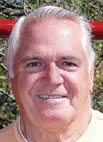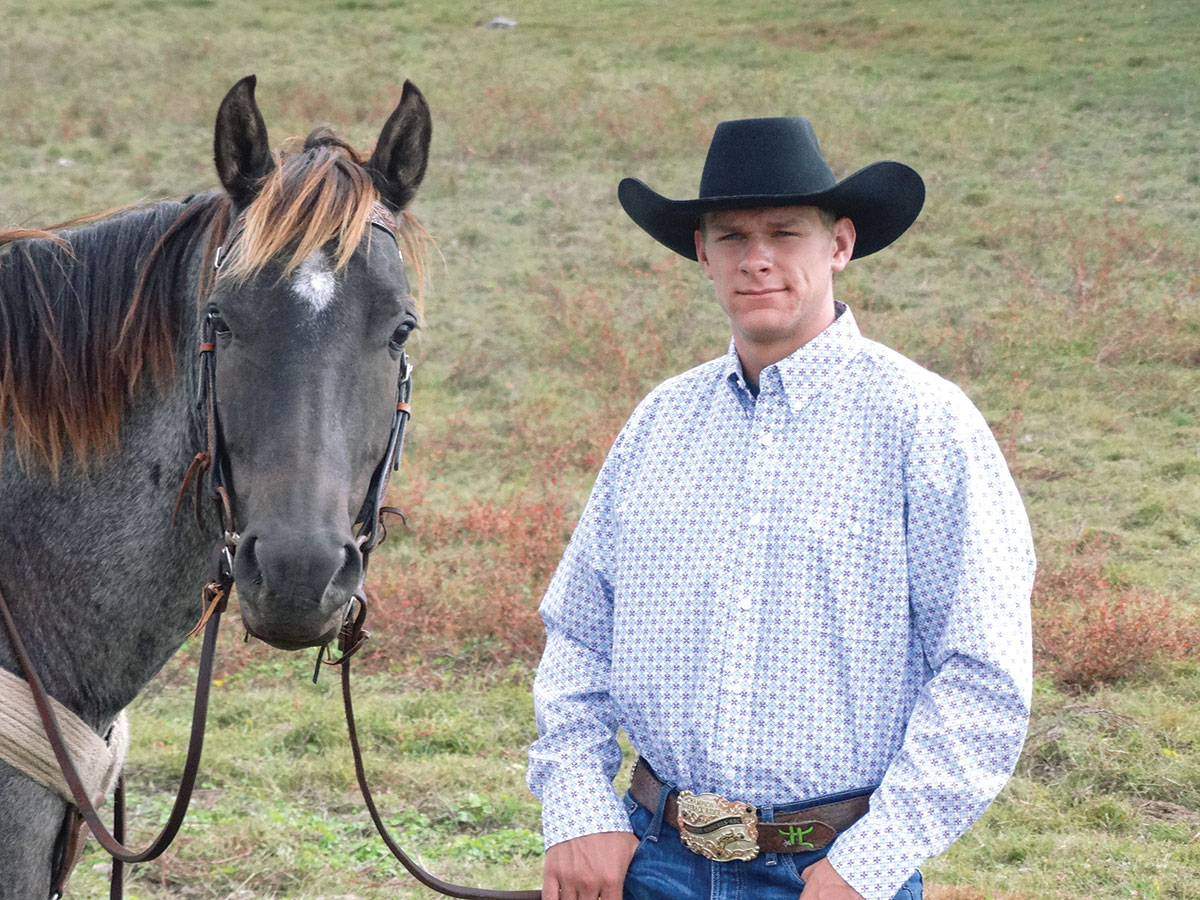 Roy Griffith and sons, Kyle and Shane Griffith, own over 2,000 acres outside of Talihina, Okla., where they raise commercial cattle in addition to Shane’s registered Black Angus bull herd and Kyle’s F1 Tigerstripe herd. Kyle works full time on the ranch while Roy’s day job is as an administrator for a veterans’ hospital and Shane is a tree marker for the Forest Service. Both sons served in the Army and in Iraq therefore not really ranching until 2006.
Roy Griffith and sons, Kyle and Shane Griffith, own over 2,000 acres outside of Talihina, Okla., where they raise commercial cattle in addition to Shane’s registered Black Angus bull herd and Kyle’s F1 Tigerstripe herd. Kyle works full time on the ranch while Roy’s day job is as an administrator for a veterans’ hospital and Shane is a tree marker for the Forest Service. Both sons served in the Army and in Iraq therefore not really ranching until 2006.
Kyle and Shane represent the fourth generation to live and work on the land their great- great-grandfather first settled with Kyle and his family now living on the original homestead. Roy’s five growing grandsons and granddaughter are the upcoming fifth generation.
In their commercial herd, the Griffith family prefers mostly Angus mommas bred to Angus bulls because getting a premium is easier. However, they do appreciate a Hereford cross for hybrid vigor and to get Black Baldies. The Griffiths run both spring and fall calves and sell within 45 days of weaning. The weaned calves are started on three pounds of 17 percent cattle ration from the Livestock Nutrition Center in Keota, Okla., and increase the amount gradually maxing out at six pounds per day just before being sold. Another aspect of the Griffith nutrition program is to inject MULTIMIN 90 supplemental trace minerals right before breeding.
This year the Griffiths are going to use the Oklahoma Quality Beef vaccine protocol because so many buyers pay attention to ear tag identification of those animals vaccinated according to the protocol in order to get the healthiest calves. The protocol requires three rounds of vaccination, the first when the calves are 2 months old (when the bull calves are also cut or banded), the second at 7 to 9 months with the third administered 14 days after the second round. Deworming is a concern for every cattleman. The Griffiths use Long Range Extended-Release after spring growth is established. When injected the vaccine turns into a gel that lasts 100 to 150 days but is not appropriate for breeding bulls, dairy cows or very young calves. An oral dewormer is used later in order to target the summer and fall worm species.
Another change in the operation is transitioning from cutting to banding partially because the Griffiths believe banding is less stressful for the calves and avoids summer fly issues. According to Roy, another reason for the transition is the purchase of a new banding gun that is very quick and highly efficient. Kyle then added, “One cattleman I know who has a birth-to-market operation maintains that banding produces better quality beef. We will soon see for ourselves.”
The ranch uses intensive rotational grazing moving cattle according to pasture size and grass consumption. Shane said, “The rule of thumb is to move the cattle whenever half of the grass has been consumed, leaving half to promote vegetation recovery.” Along the same lines, the Griffiths do not hay their own ground but rather purchase all of their hay. Shane said, “We bring other people’s nutrients to our place instead of using up our own.” One result is that cattle manure is the only fertilizer needed. Additionally they have a spring program to control weeds.
Cedars and junipers are considered an invasive species in Oklahoma, and the Griffiths once took advantage of a government eradication program through the local soil conservation base. The program helped with the cost of removing the trees as long as no trace was left which included cutting, piling and burning all of the debris.
The drought heavily impacted the Griffiths operation. Even though they have two creeks and 42 ponds, their herds didn’t have enough water. Roy said, “You can’t buy your way out of the drought. You sell your way out.” The current herds have grown back to three quarters of their pre-drought number, and ponds are undergoing extensive cleaning to prevent bacterial issues should the drought return anytime soon. Shane pointed out that the drought did present an opportunity to improve their herds’ genetic quality so that the terrible impact had at least one upside.
Kyle is the cowboy in the family and even has an arena for practicing with his 10 Quarter Horses. He has become the local specialist for handling crazy cows using a horse and perhaps one of his Black Mouth Curs to manage the troublesome and often receives phone calls seeking his help. Currently Kyle is teaching his sons who may someday take his place.
The family is considering the possibility of adding AI to their breeding practices as the boys grow older. For the moment, however, the Griffiths believe AI is too time intensive.







